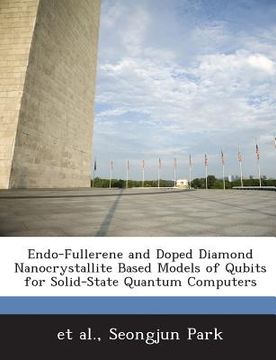Share
Endo-Fullerene and Doped Diamond Nanocrystallite Based Models of Qubits for Solid-State Quantum Computers
Seongjun Park
(Author)
·
Bibliogov
· Paperback
Endo-Fullerene and Doped Diamond Nanocrystallite Based Models of Qubits for Solid-State Quantum Computers - Park, Seongjun ; Et Al
Choose the list to add your product or create one New List
✓ Product added successfully to the Wishlist.
Go to My Wishlists
Origin: U.S.A.
(Import costs included in the price)
It will be shipped from our warehouse between
Tuesday, July 30 and
Tuesday, August 06.
You will receive it anywhere in United Kingdom between 1 and 3 business days after shipment.
Synopsis "Endo-Fullerene and Doped Diamond Nanocrystallite Based Models of Qubits for Solid-State Quantum Computers"
Models of encapsulated 1/2 nuclear spin H-1 and P-31 atoms in fullerene and diamond nanocrystallite, respectively, are proposed and examined with ab-initio local density functional method for possible applications as single quantum bits (qubits) in solid-state quantum computers. A H-1 atom encapsulated in a fully deuterated fullerene, C(sub 20)D(sub 20), forms the first model system and ab-initio calculation shows that H-1 atom is stable in atomic state at the center of the fullerene with a barrier of about 1 eV to escape. A P-31 atom positioned at the center of a diamond nanocrystallite is the second model system, and 3 1P atom is found to be stable at the substitutional site relative to interstitial sites by 15 eV, Vacancy formation energy is 6 eV in diamond so that substitutional P-31 atom will be stable against diffusion during the formation mechanisms within the nanocrystallite. The coupling between the nuclear spin and weakly bound (valance) donor electron coupling in both systems is found to be suitable for single qubit applications, where as the spatial distributions of (valance) donor electron wave functions are found to be preferentially spread along certain lattice directions facilitating two or more qubit applications. The feasibility of the fabrication pathways for both model solid-state qubit systems within practical quantum computers is discussed with in the context of our proposed solid-state qubits.
- 0% (0)
- 0% (0)
- 0% (0)
- 0% (0)
- 0% (0)
All books in our catalog are Original.
The book is written in English.
The binding of this edition is Paperback.
✓ Producto agregado correctamente al carro, Ir a Pagar.

